First let me transform the data you pasted into an actual table:
WITH data AS (
SELECT REGEXP_EXTRACT(data2, '[0-9]') id, REGEXP_EXTRACT(data2, '[A-Z]') cat
FROM (
SELECT SPLIT("""1 A
1 B
1 D
1 F
2 B
2 C
2 D
3 A
3 F""", '\n') AS data1
), UNNEST(data1) data2
)
SELECT * FROM data
 (try sharing a table next time)
(try sharing a table next time)
Now we can do some manual 1-hot encoding:
SELECT id
, MAX(IF(cat='A',1,0)) cat_A
, MAX(IF(cat='B',1,0)) cat_B
, MAX(IF(cat='C',1,0)) cat_C
FROM data
GROUP BY id

Now we want to write a script that will automatically create the columns we want:
SELECT STRING_AGG(FORMAT("MAX(IF(cat='%s',1,0))cat_%s", cat, cat), ', ')
FROM (
SELECT DISTINCT cat
FROM data
ORDER BY 1
)

That generates a string that you can copy paste into a query, that 1-hot encodes your arrays/rows:
SELECT id
,
MAX(IF(cat='A',1,0))cat_A, MAX(IF(cat='B',1,0))cat_B, MAX(IF(cat='C',1,0))cat_C, MAX(IF(cat='D',1,0))cat_D, MAX(IF(cat='F',1,0))cat_F
FROM data
GROUP BY id

And that's exactly what the question was asking for. You can generate SQL with SQL, but you'll need to write a new query using that result.



